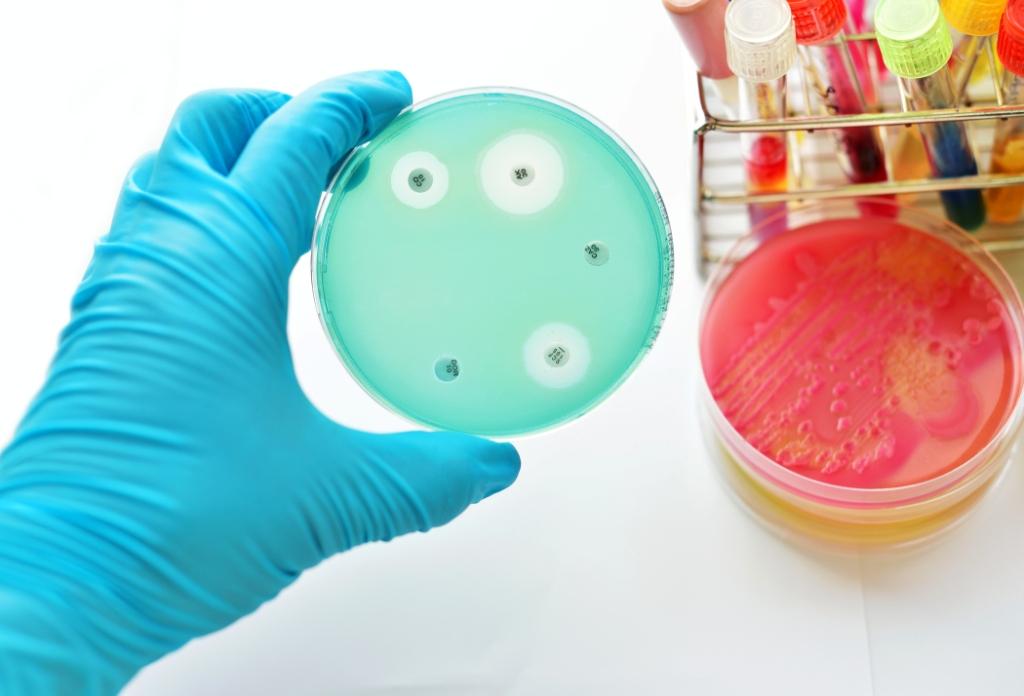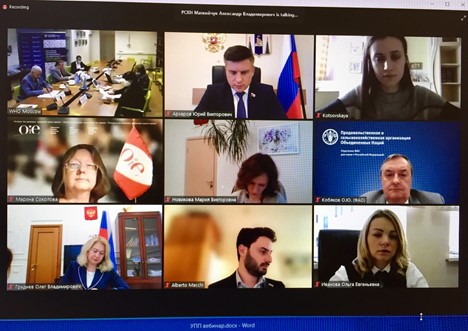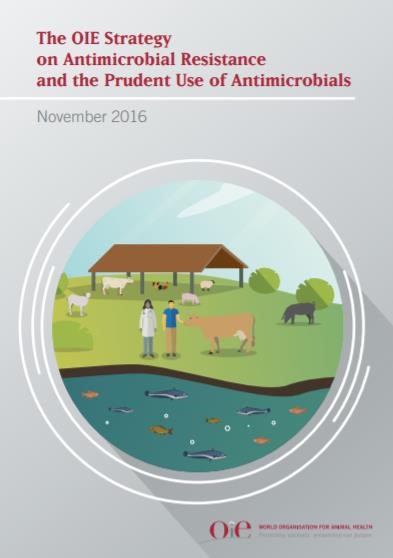






World Antimicrobial Awareness Week 2021
As part of the annual World Antimicrobial Awareness Week, which is marked from 18 to 24 November, the World Health Organization (WHO), Food and Agriculture Organization of the United Nations (FAO), World Organization for Animal Health (OIE), and the United Nations Environment Program Environment (UNEP) in Russia held a traditional expert round table together with partners involved in the implementation of the Russian National Strategy for preventing the spread of antimicrobial resistance (AMR).
The round table was attended by representatives of the Federation Council, the Ministries of Health and Agriculture and their subordinate agencies, the World Bank, and Russian universities.
Opening the online meeting, Dr Melita Vujnovic, WHO Representative in the Russian Federation, noted that a Quadripartite Alliance has been established in the world, ready to confront antimicrobial resistance, “the greatest threat to the health of the world’s population, and to which we must say: “Stop!”, she said, “All four agencies, FAO, WHO, OIE and UNEP, continue to work with our partners to ensure that One Health is high on the national agenda.”
On behalf of Dr Budimir Plavsic, OIE Regional Representative for Europe in Moscow, Dr. Marina Sokolova welcomed the participants of the roundtable. In her speech, she spoke about the OIE AMR Strategy, adopted in 2016, which formulates four main objectives in the framework of an effective tackling against antibiotic resistance and its consequences. They are, first, to improve awareness and understanding. Secondly, strengthen knowledge through surveillance and research. Thirdly, support good governance and capacity building. And fourthly, encourage implementation of international standards to tackle AMR, included in the OIE Terrestrial Aquatic Animal Health Codes.
Dr Sokolova noted that the experience of many countries and the results of scientific research on the resistance of human and animal pathogens show that it is not too late to change the situation.
“We aim to create a platform for a broad coalition of all stakeholders,” emphasized Oleg Kobyakov, Director of the FAO Liaison Office with the Russian Federation. He recalled that by 2050, according to forecasts, in addition to the economic losses from the spread of AMR, up to 25 million people “will be thrown beyond the brink of poverty.” FAO has updated its 5-year plan to reduce the incidence and spread of AMR across all value chains in all sectors of agriculture.
Vladimir Moshkalo, Head of the United Nations Environment Program (UNEP) Office in the Russian Federation, underlined that previously less attention was paid to the “environmental aspect” of countering AMR, but last year UNEP, within the framework of the “One Health” concept, joined the Tripartite Alliance with the World the Health Organization (WHO), the World Organization for Animal Health and FAO to address the threats in the human-animal-nature interface.
Sevil Salakhutdinova, Senior Health Specialist of the World Bank in the Russian Federation, stressed that AMR is a major challenge to human development and global security. She noted that if effective measures are not taken to combat the spread of antimicrobial resistance, the world could lose 3.8% of its annual GDP by 2050. The expert in her report said that the World Bank fully supports the range of measures implemented within the One Health approach and is grateful to WHO, FAO and OIE for fruitful cooperation in the implementation of joint projects.
Dr Maria Novikova, Director of the Veterinary Department of the Ministry of Agriculture of the Russian Federation, spoke about the problem of antimicrobial resistance in agriculture. “We fully and completely share the concept of One Health, which is embedded in our action plan to combat antimicrobial resistance,” she said in her speech. She also stressed that in its activities the Ministry of Agriculture considers the OIE Standards and Recommendations.
Professor Lyalya Gabbasova, Deputy Director of the Medical Scientific and Educational Center, Moscow State University after M.V. Lomonosova, spoke about the participation of the Russian Federation in the TrACSS country self-assessment programme. In this report, the Russian Federation includes data on agriculture and veterinary medicine.
Academician Roman Kozlov, Rector of the State Smolensk Medical Institute “SSMU” of the Chief Specialist of the Ministry of Health of Russian Federation on Clinical Microbiology and Antimicrobial Resistance, as well as Dr. Olga Ivanova (VGNKI, Rosselkhoznadzor), described the online platform AMRcloud, where data on AMR in veterinary are included.
As an alternative to antibiotics, Yuri Schmidt, Head of the Press office of the Veterinary Department of the Novosibirsk Region (RF), a member of the section of the Expert Council under the Committee of the Federation Council of the Russian Federation on Agrarian and Food Policy and Environmental Management, proposed the use of probiotic preparations, algae, chlorella, forest resources (coniferous flour, medicinal herbs for the treatment of young animals). Phytobiotics significantly expand the microbiological composition of the microbiome of the gastrointestinal tract of animals and help keep animals healthy without the widespread use of antibiotics.
Sergey Kasparyants, Commercial Director of the VIC Group of Companies, spoke about five main trends in tackling antibiotic resistance in animal husbandry: diagnostics, biosafety, vaccination, improvements, and treatment protocols in modern production of medical antiviral drugs and antibiotics. He also drew attention to improving the quality of antibiotics, which was facilitated by the standardization of processes and increased reliability of production.


